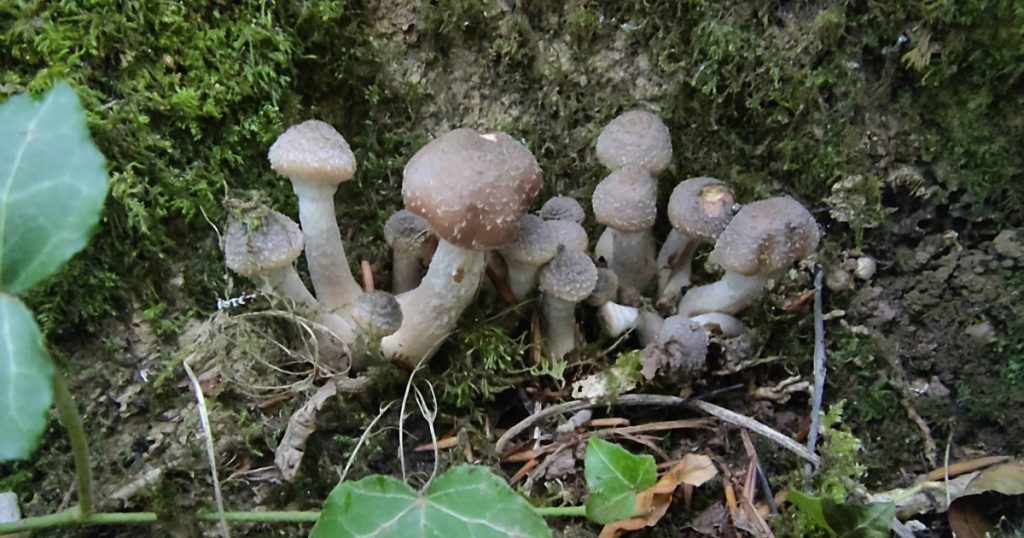
Mushrooms are a big thing right now in speculative fiction. I’ve enjoyed putting together this glossary of terms relating to fungi and the trend for fungal fiction. I wrote this in response to Jasmin Kirkbride’s keynote on mushroompunk at the Current Research in Speculative Fiction conference in July 2025.
Funga
The kingdom of fungi, like flora for plants and fauna for animals.
Fungal fiction
Fiction in which fungi pay a key role in influencing the characters and/or course of events. The definition relates to the content, rather than the form, of the fiction.
Fungal fixes
The capitalist co-option of fungi to create technological fixes to climate and environmental damage without the need for societal change, for example mushroom-based disposable packaging or mycoremediation projects.
Fungal turn
The academic framing of the recent trend for fungi in speculative fiction and wider culture. See ‘What is Fungal Turn? Explorations and Interview with Sherryl Vint and Alison Sperling’ by Allison Mackey and Elif Sendur in Interconnections: Journal of Posthumanism vol 3.2 Autumn 2024.
Fungi
The collective name for all kinds of fungus, including mushrooms but also mould and yeast.
Hyphae
Tiny, hair-like structures of a fungus that branch through the soil to absorb water and nutrients, and collectively make up the mycelium.
Mushroom
The fruiting body of a fungus (like the apple is to an apple tree).
Mushroompunk
The -punk suffix (seen elsewhere in cyberpunk, steampunk and solarpunk for instance) combines with mushrooms to create a hopeful future where mycelium inspire ways of living that are consistent with climate justice and social equality.
Mycelioptimism
The idea that mycelia (see mycelium below) are our fungal saviours. Related to mycoremedation and fungal fixes.
Mycelium
The part of the fungus that lives below ground (like the apple tree is to an apple).
Mycophilic
Loving the fungi.
Mycophobic
Fearing the fungi.
The above terms (mycophilic and mycophobic) were coined by Gordon and Valentina Wasson in 1957. They can be used to describe different kinds of fungal fiction, e.g. mushroompunk is mycophilic.
Mycoremediation
The idea that fungi can solve problems of human origin by digesting waste such as plastic and oil pollution, and even radioactive contamination.
Mychorrhizal fungi
Fungi in a symbiotic relationship with the roots of a plant.
Sporror
Spores + horror. The mycophobic counterpart to mushroompunk. Commonly features human bodies being taken over by fungal hosts.
Wood wide web
A term coined by Suzanne Simard to describe how trees are connected through their roots by vast systems of mycorrhizal fungi that transmit nutrients and potentially communicate between plants.
Fungal fiction recommendations
If you’re interested in the fungal turn, I can recommend:
- The Seep by Chana Porter
- Kinning by Nisi Shawl (second in the Everfair series)
- Sorrowland by Rivers Solomon
- Entangled Lives by Merlin Sheldrake
- The Mushroom at the End of the World by Anna Tsing
Please let me know your recommendations and if there is anything I should add to the glossary.
